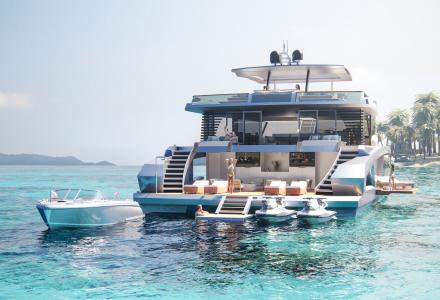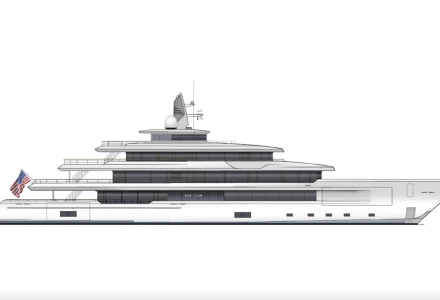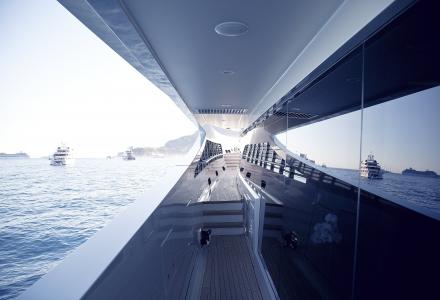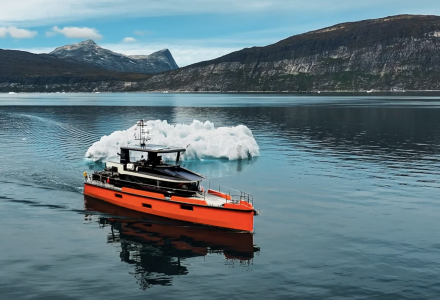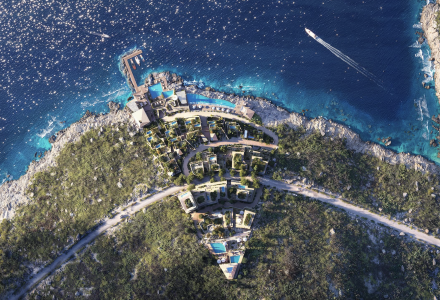The question whether to choose a monohull vessel or a catamaran is an eternal dispute between two camps of yacht lovers, arguments for which are usually based not only on cold calculations, but also on a particular philosophy.
The popularity of catamarans has grown significantly since the concept of their design underwent a number of important changes, in the light of which even multi-hull sailing vessels have now ceased to represent only a class of sports vessels, turning from Spartan-like vessels into luxurious and most comfortable cruisers.
So why have so many charter agencies added sailing and motor catamarans in their fleets? (And some have even made them their main focus.)
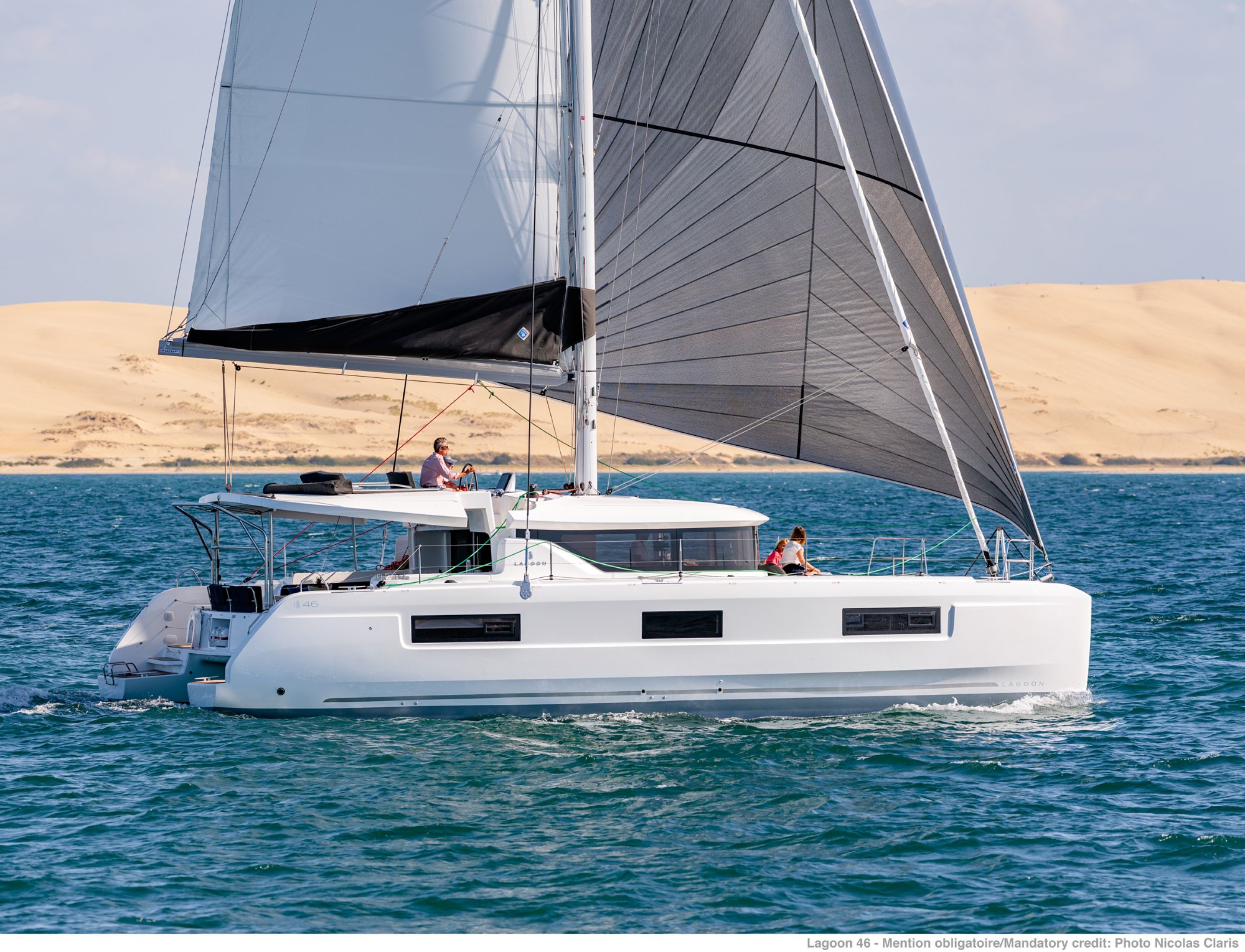
A person who takes a yacht for a charter, would surely list a calm and predictable on-water vacation among his or her preferences. That would mean relaxation, enjoying the sea and the sun, glasses of delicious wine and beautiful fruit platter on the table. For many this wouldn’t get along with sea-sickness, rolling at 25 degrees and narrow cockpits of classic cruising yachts.
The catamaran hull offers high stability, a horizontal deck and unprecedented space for the whole family or group of friends, for whom moving around the ship becomes no more difficult than in a country-side house.
CATAMARANS’ MAIN ADVANTAGES:
1. Capacity and habitability
This is the first and main reason for the popularity of multi-hull yachts. The salon, huge by classical standards, is most often located at the level (or almost at the level) of the main deck, which saves the crew and guests from having to squeeze back and forth along narrow ladders, unlike monohull layouts. What’s more, one cannot take for granted the flybridge - unprecedented for sailing classics.
As for sunbathing and close observation of dolphins - there is an ideal place: the bow net between the floats. In addition, the skipper’s post at the steering is usually separated, so in case of a charter you will not interfere with each other.
When sailing in a company of three or more people, catamarans provide much more privacy: two blocks with living areas are located far from each other.
Cooking and dining with friends can be immeasurably pleasant on the spacious catamaran board.
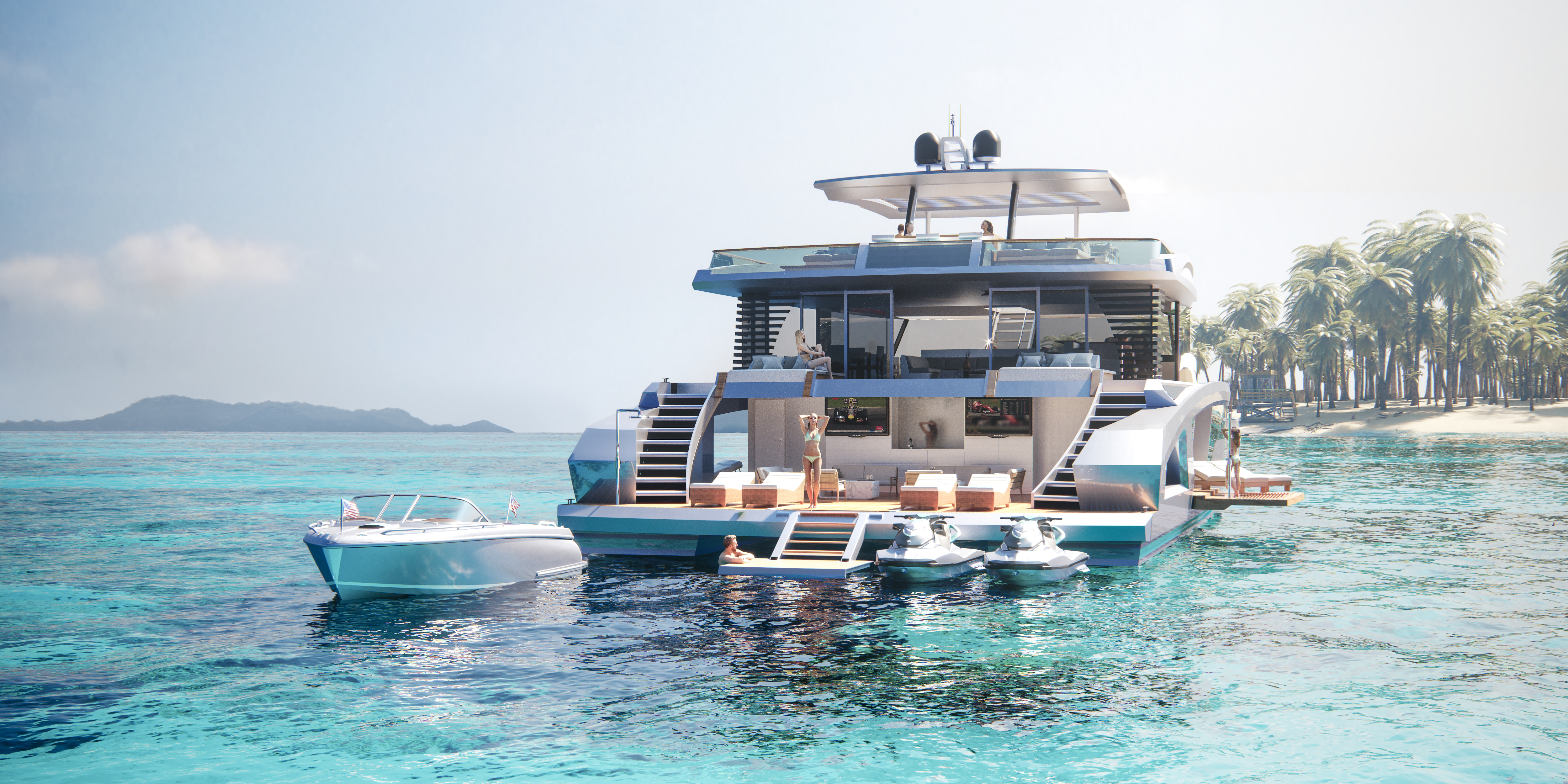
2. Manoeuvrability
Catamarans have two engines with drives located at the aft ends of the floats. Due to the distance between them, there is zero tactical circulation, which means the boat can turn almost without changing its position. Modern control systems and dynamic drives, along with bow thrusters, are surely able to deploy a monohull in the same manner, but such technical equipment in most cases is unreasonably expensive.
3. Fuel efficiency
The resistance of two low-loaded sharp hulls is less than that of a single one with a ballast keel. Therefore, one can feel the difference in fuel consumption. But only in good weather. When the weather is close to storm conditions, the monohull is more efficient and can take the lead in cost saving.
Many skippers run under one engine to save fuel, whereas both engines are used only for mooring manoeuvres.
4. Security
For years advocates of classics have argued that catamarans are not as safe as their keel boats. But this statement can now be considered outdated as its origins lie back in the middle of last century, when the majority of catamarans were built by amateurs themselves. Even in calm weather they could easily be turned over, especially if one of its bodies lost its leakproofness due to damage.
For a well-built modern catamaran it is very difficult, if not impossible, to sink.
Modern structures are created based on computer modelling of any sea conditions. Cruisers, and charter options in particular, have the maximum possible safe sail area.
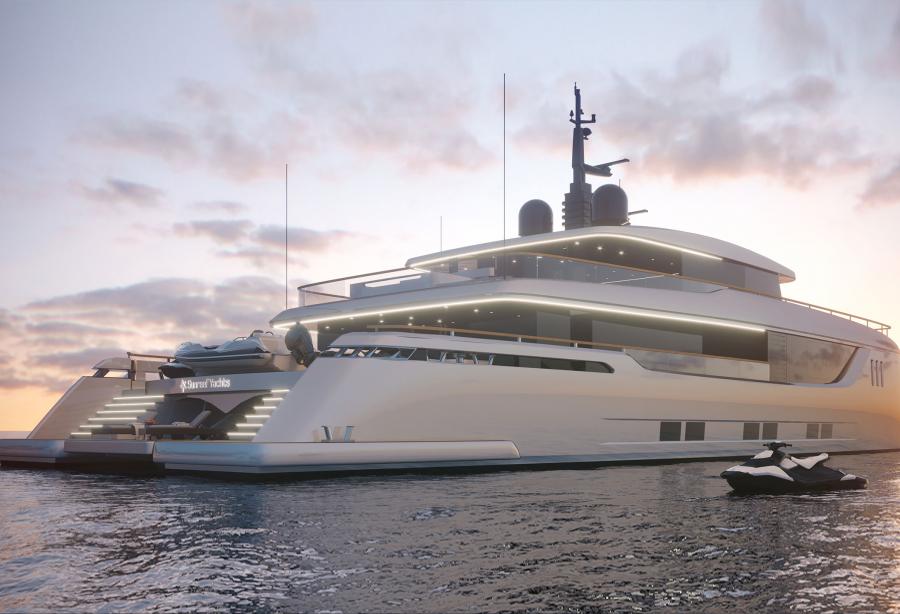
5. Comfort
Overall comfort is another important issue, when it comes to choosing a yacht. A lot of sea-lovers, over the years of owning classical vessels, still haven’t been able to get rid of seasickness, and buying a catamaran could solve this problem.
Most catamarans don't even have galley stoves with hinges, which are just not needed.
6. Precipitation
Absence of a ballast keel slightly expands the possibilities and opens up access to some unequipped shores.
CATAMARANS’ DISADVANTAGES:
1. Price
Multihull vessels are indeed more expensive, both to acquire or to charter. Prices continue to grow together with catamarans’ popularity. The purchase price is half the trouble, as the services are also more expensive than those for the classics - at least for the fact that there are two engines instead of just one.
The high cost of land transportation and storage, when necessary, can also be mentioned. Price for a place in the marina would be higher, whereas some yacht clubs are not suitable for catamarans and trimarans at all.
The consolation is that used catamarans are usually sold faster and have smaller losses in price in relative terms.
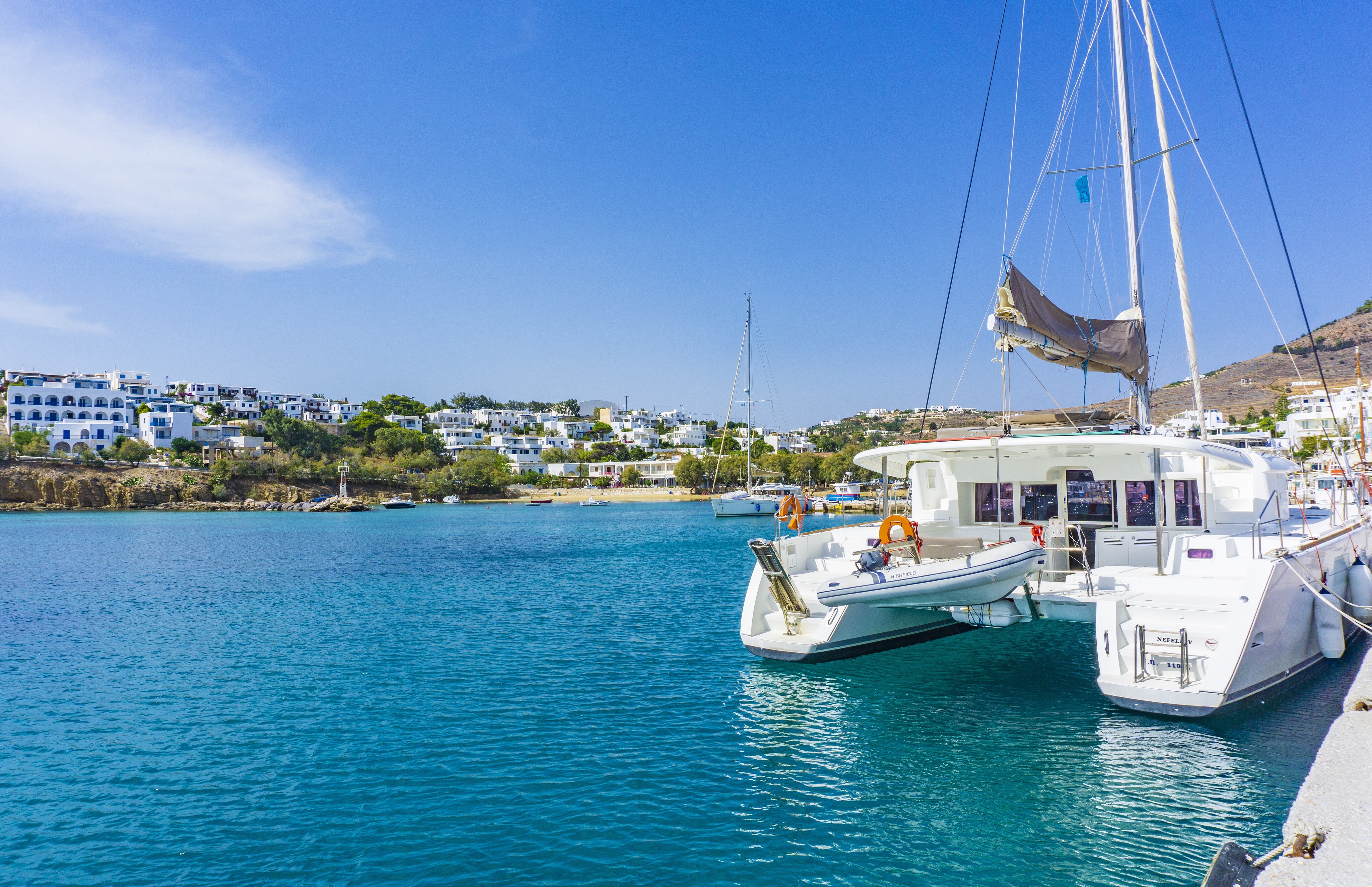
2. Lack of feedback while sailing
Catamaran yachts are not suitable for sailing sport. They can be just great to go for a vacation or even to live on them, just like in a houseboat, but it is exactly because of their stability that half of the yachtsmen would never buy them. On a catamaran there is no sense of wind, waves, flight, and of the boat itself.
It is extremely difficult to determine the moment when it is necessary to reef. While on a monohull this can be done by feeling, for catamarans there is an instruction at what winds the sails area should be reduced.
3. The noise and shaking
Catamaran hulls have an excellent feature of dampening low side waves, leaving the transversal line of the hull close to the horizon. However, oncoming or tangled medium-sized waves create a continuous soundtrack when trapped between the floats and the superstructure bottom. Strong flip-flops cause vibration. In this regard, it is recommended to choose catamarans with at least one metre of clearance.
4. Windage
Large windage of the surface part of the vessel, together with low draught, sometimes makes the catamaran a “toy” in the hands of the wind. And if multihull cruisers with distinct keel elements are quite like sailboats able to go into a strong side wind no worse (or even better) than monohull cruisers, models designed for calm charter trips would perform terribly. Though, to be quite fair, it should be noted that this feature is not so relevant under engines.
5. Not suitable for high latitudes
The best choice for the North Atlantic is an aluminum trawler motor yacht. And, of course, if we consider sailboats, a monohull would be a better solution than a catamaran. Residential areas are easier to heat and keep them warm, metal classics can even go through thin ice.
However, the opposite is true for the equatorial zone — spacious catamaran salons would be beyond competition.
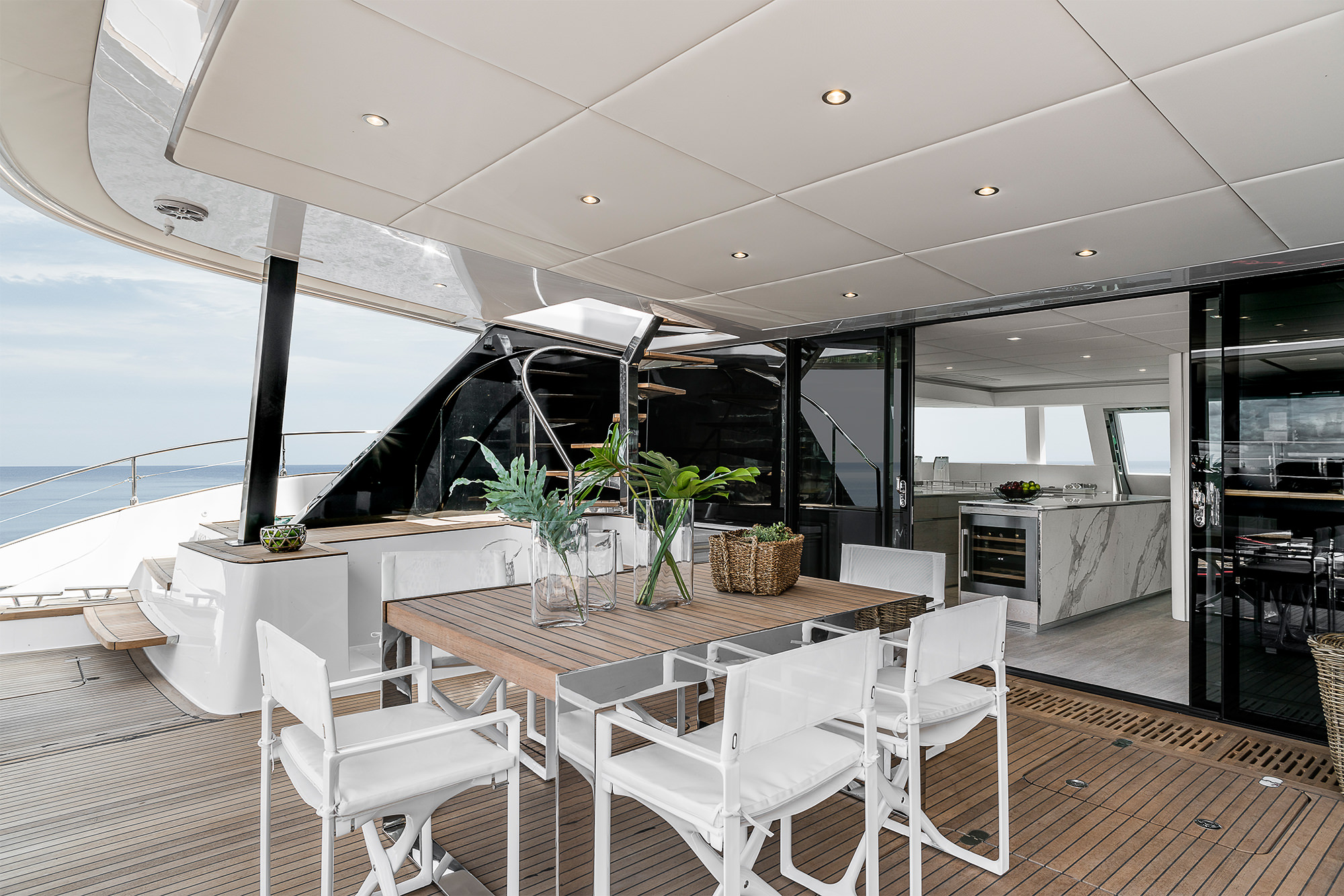
6. Not so romantic
The majority of sea-lovers claim that classical boats are more romantic than multihulls. In fact, this is a strange and controversial statement, as catamarans have their own special charm. A dinner with a panoramic view over the sea and the stars - what can be more romantic?
WHO IS FASTER
For some reason, it is often believed that a sailing catamaran is faster than a monohull. This is true if you compare a sports catamaran with an average cruiser. However, this would hardly be applicable to, for example, charter modifications of catamarans. Such models only go well at up to half-wind and almost won’t go at sharper courses. However they lie better at anchor.
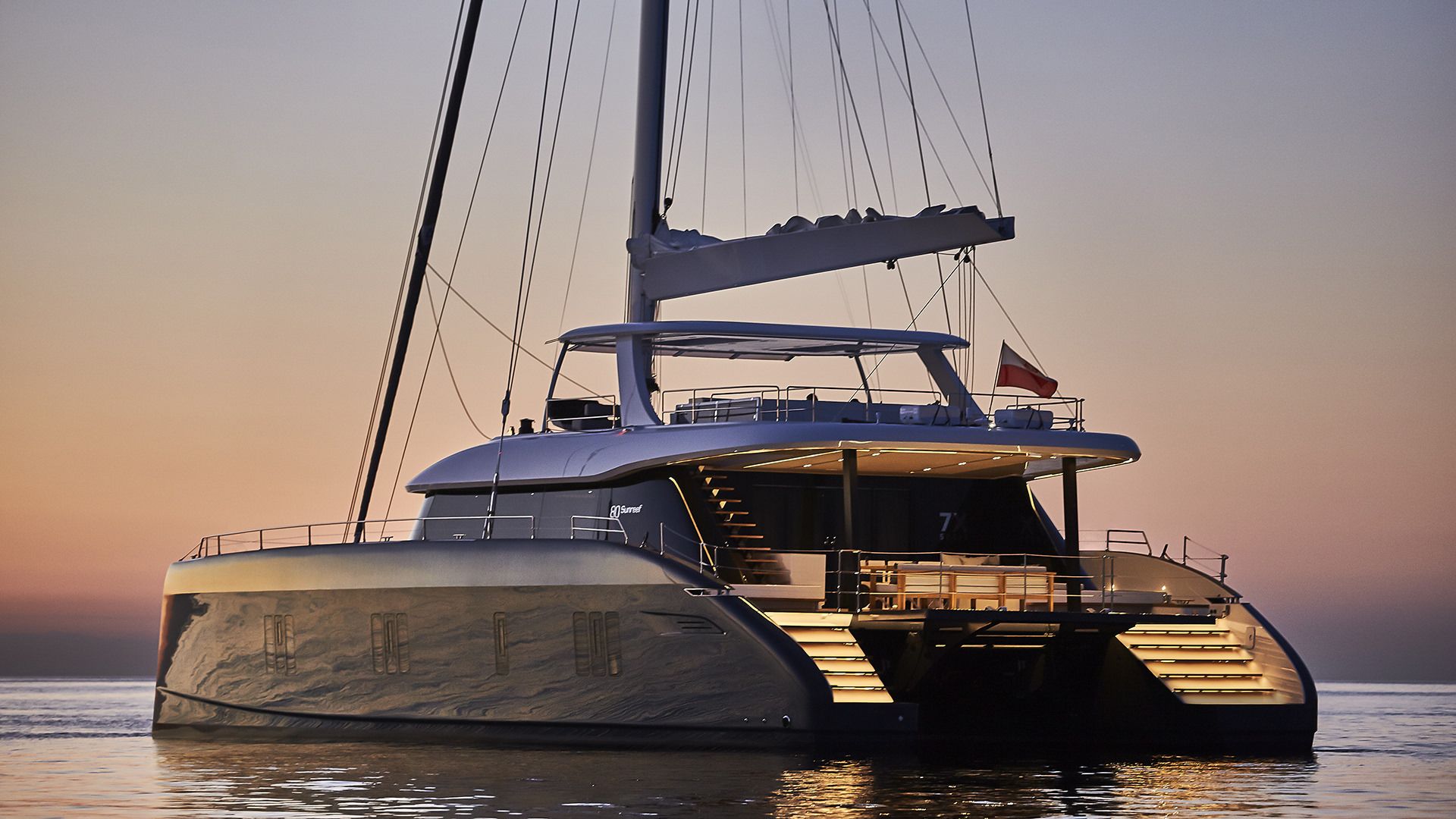
TO SUM UP
As normal, everything would surely depend on two main factors: personal preferences and the financial aspect.
The two types of vessels give a completely different feeling, so it is highly recommended to rent and try each of them before buying - to compare the feelings. In any case, it is safe to say that a catamaran is just an ideal option - if not for purchasing, but surely for a charter. Although it is expensive, it offers quite a lot.
(Based on the article by Mikhail Safronov)
